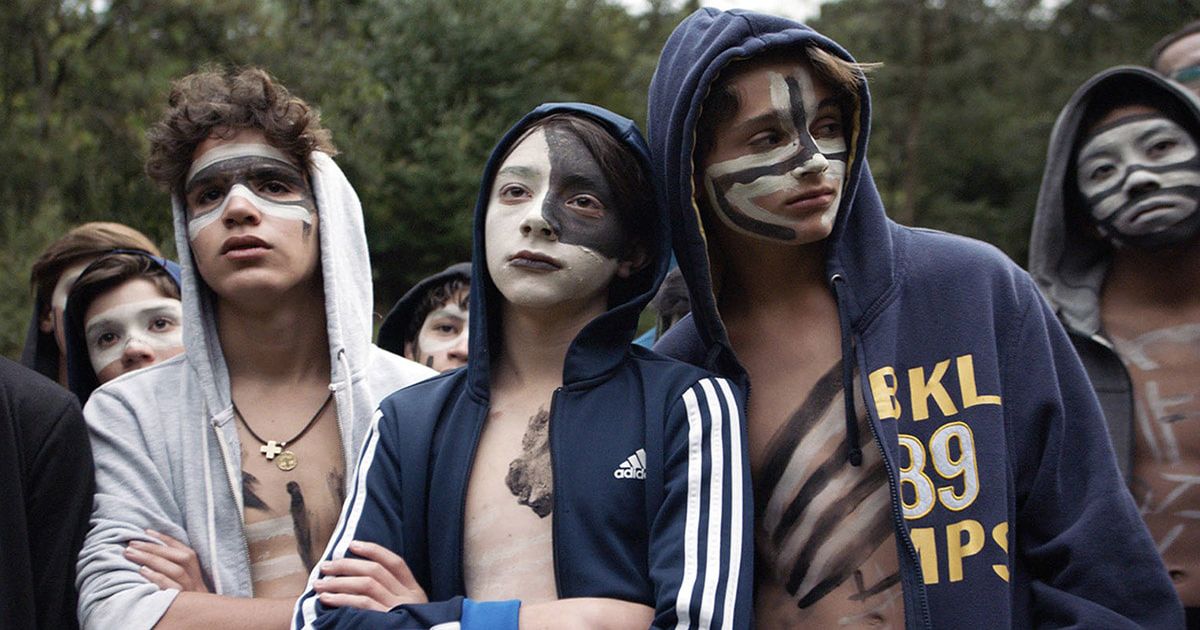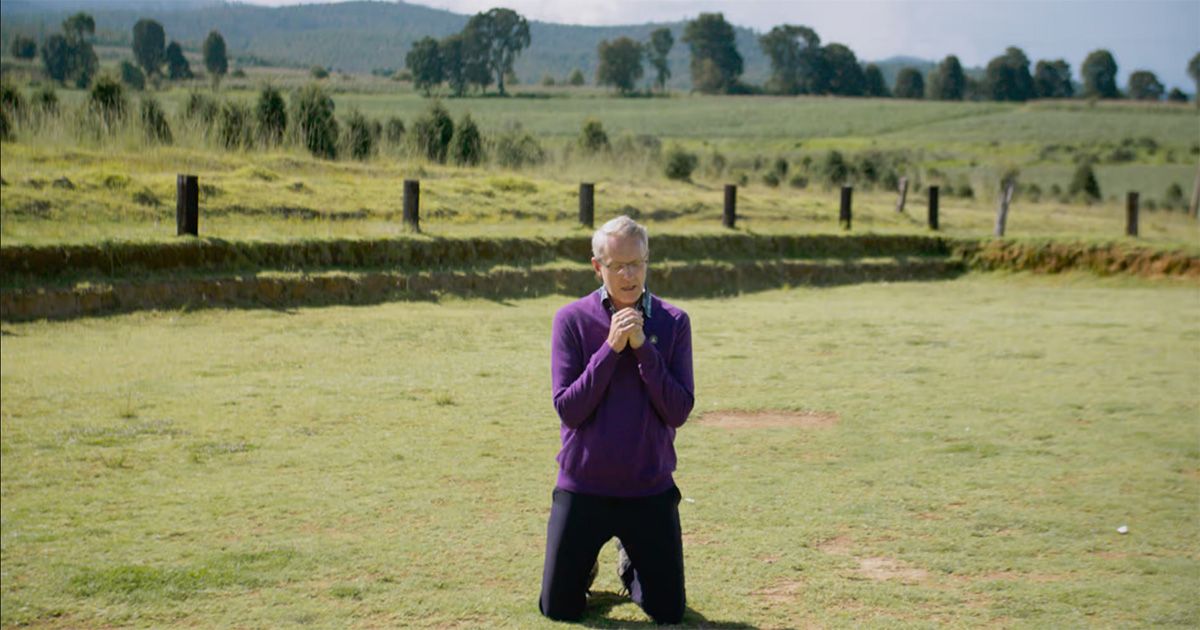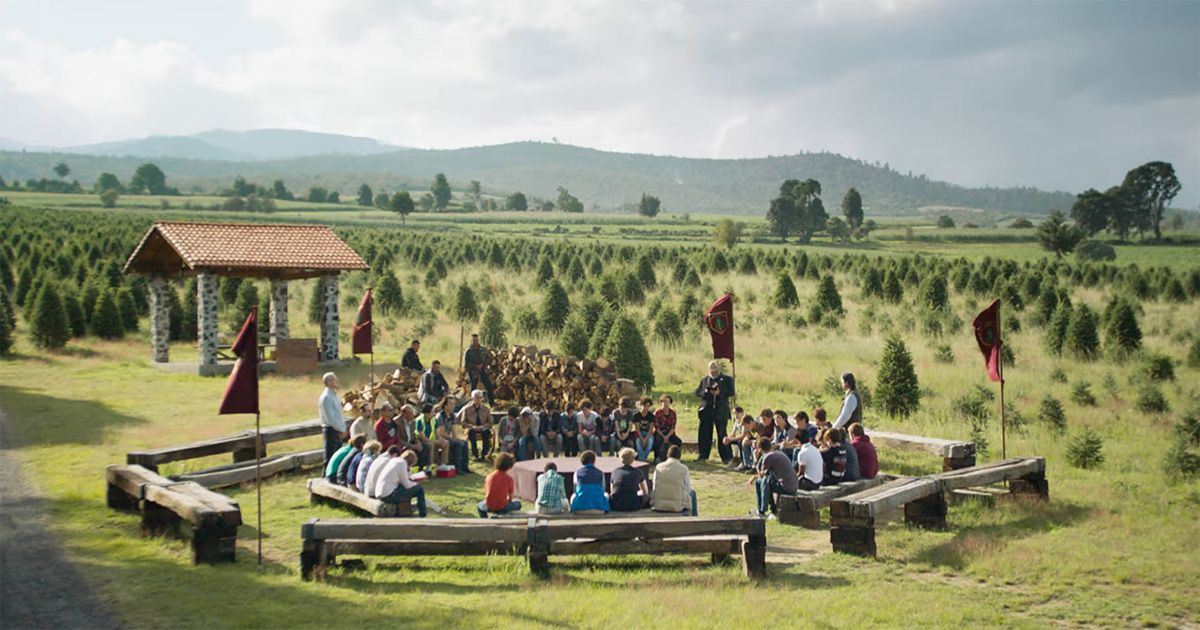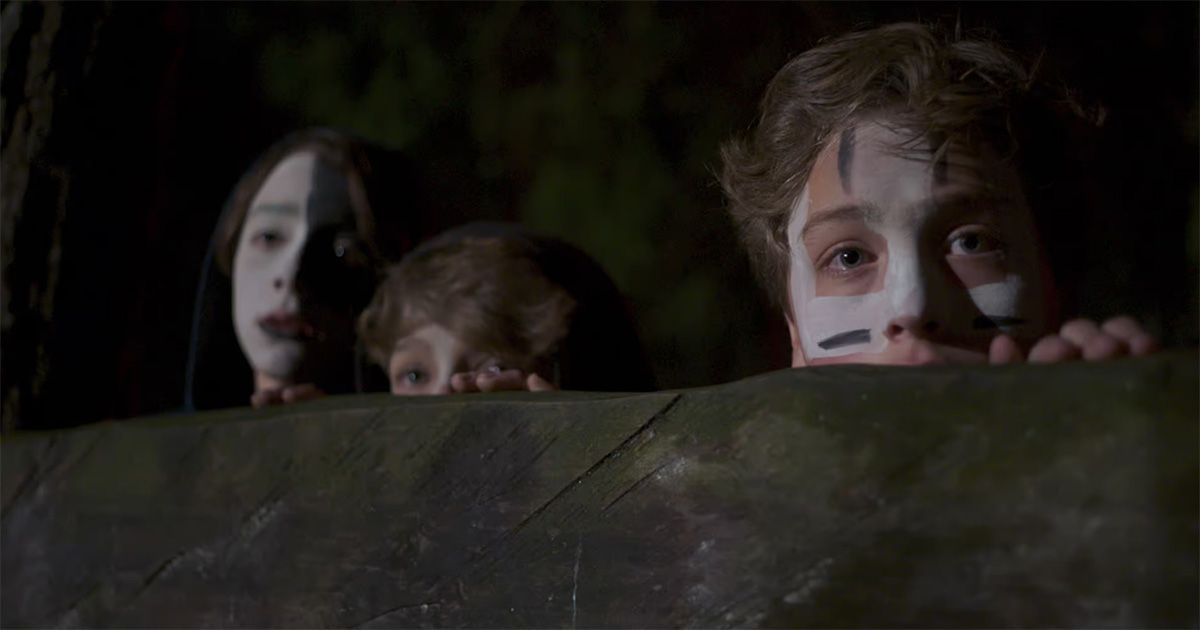It's seldom that award-winning movies go out of their way to shine a realistic and negative light on the subject of religion, and the consistent child indoctrination that occurs throughout most cultures across the planet. But Joaquin del Paso does just that with his intense Polish-Mexan drama, The Hole in the Fence. The film was also written by del Paso, along with his frequent collaborator, Lucy Pawlak (Panamerican Machinery). The Hole in the Fence stars Valeria Lamm, Lucciano Kurti, Eric David Walker, Yubah Ortega, and Santiago Barajas Hamue, among a vast cast of child actors that make up its strong ensemble. It has been nominated for more than 15 awards, and took home the Best Film award at the Cairo International Film Festival.
The movie follows a group of kids known as the "children of the Mexican elite," who have been sent from their private schools to a religion-based summer camp in the countryside, bordering a small town. The goals of the on-site camp instructor are to help the boys raise their physical strength and mental toughness, fortify their faith in God, and build religious structures in missionary-style tasks.
With tensions already high from several of the boys not getting along with one another, a massive hole is found in the surrounding fence that separates the camp from the nearby town. The boys are on high alert when it's suggested that a criminal intruder or ferocious beast has entered the camp's proximity, and their stressed feelings start to become dangerous.
A Display of Religious Indoctrination
The dangers of unwavering religious indoctrination of the youth (in this case, the Mexican youth), are on full display in The Hole in the Fence. From the beginning of the boys' arrival, their complete focus is on essentially nothing but using their religion as a guide and rebuttal for anything and everything they do. They're essentially forced to do slave labor and build structures for the Lord's acceptance; after another boy is severely beaten by the group for telling on them, the leaders' responses are to praise him for "being an honest man."
In fact, the focus on their faith is so narrowed, that the leaders create dangerous and dishonest situations to make the boys become on-edge and more terrified, only so they can look to God for the answers and comfort, as only he will provide them the safety from threats. While these threats are very real to the boys, and make them lash out even more, they are manipulated by the leaders.
Extremely Intentional Themes and Cinematography
Joaquin del Paso's camera work in The Hole in the Fence is flat-out stunning. He lingers on beautiful shots intentionally, letting the audience soak in both the isolation of the surroundings, and the darkness of the more disturbing scenes in the movie. While this isn't a horror movie (though a disturbing drama), several of the shots give off intentional cult-like vibes similar to popular horror films like Midsommar or The Wicker Man.
And while the movie never really finds itself in horror territory, the thrilling, horrific themes are definitely there, as some of the moments where things get out of hand are aligned with the toxic masculinity themes from films like The Lord of the Flies or Issa López's Tigers Are Not Afraid.
Even with the last shot of the movie, the audience is well aware of what they're looking at, and what's transpired beforehand. Del Paso chooses this moment to linger and let the audience take some time to process what they've just seen, burning the image into the viewers' minds, to be thought about for days afterward. The technical aspects of the movie lead to filmmaking at its best.
Focus on Racism, Classism, and Intersectionality
Along with its religious themes, The Hole in the Fence also puts a spotlight on racism, and specifically the intersectionality of minority children bullying and being prejudiced toward others for things like the color of their skin or sexual orientation. Racism and discrimination are often addressed by films and their dialogue, but intersectionality is an important topic that isn't focused on enough through art.
In The Hole in the Fence, most of the Spanish-speaking boys are white, upper-class kids of rich people, and they use their privilege to not only look down upon the poorer, more brown members of the group, but they essentially see the local townspeople as dogs, due to their poor lifestyles. The film even results in one of the darker-skinned boys becoming as hateful and discriminatory as the other kids, simply so he doesn't have to be put through it anymore, and to gain acceptance among the group; a classic tale of how toxicity can spread among the infighting of minorities.
The Hole in the Fence has some extremely relevant and important themes, incredible cinematic film work, and a grim story that sticks with you well after the credits roll. Joaquin del Paso hit a home run with this haunting, yet very realistic religious tale.




